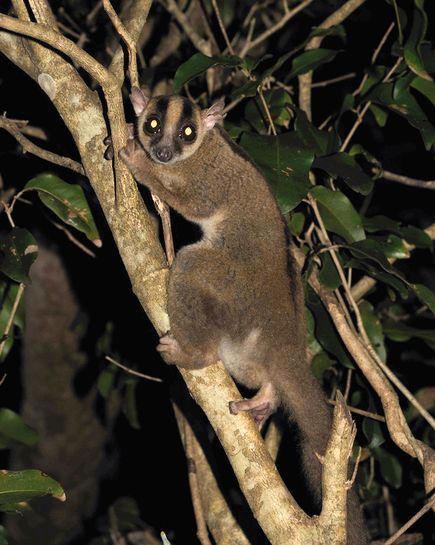Phaner furcifer
IUCN
LCBasic Information
Scientific classification
- name:Phaner furcifer
- Scientific Name:Phaner furcifer
- Outline:Primates
- Family:Lemuridae Lemuridae
Vital signs
- length:13-28cm
- Weight:About 50g
- lifetime:No verification information
Feature
Newly discovered lemur species
Distribution and Habitat
Lives in forests along the western and northern coasts of Madagascar
Appearance
The animal appears to have an unusual color pattern compared to the other four known species of lemurs, which are all black with Y-shaped stripes starting from the eyes and merging into a single line at the top of the head. Genetic testing will reveal whether the new lemur is a fifth species.
Details
Phaner furcifer, scientific name, is a possible new lemur species, according to Conservation International. Little is known about the species, although Conservation International experts suspect it is likely endangered due to habitat loss.

The forked-spotted mouse lemur feeds on the resin of temperate deciduous forests. Its call is loud and high-pitched, and its head shakes easily. Its hands and feet are wide, so it can easily grasp branches. Its tongue is long and easy to absorb nectar. Its teeth are dedicated to chewing bark. It is a typical forest-dwelling creature.
Female lemurs are in heat for only 3-4 days a year, usually in June. They give birth to one baby between November and December. The animal's head keeps bobbing up and down, as if it is nodding, and it has a loud voice. An interesting forked lemur found in Madagascar is likely to be a new species of lemur. Conservation International (CI) claims that this animal, found in Darina, northeastern Madagascar, will help scientists study lemurs more deeply.
Unlike other primates in Madagascar, they have evolved relatively independently. Scientists believe that the ancestors of these lemurs used to live in southeastern Africa and migrated to Madagascar by chance across the sea. Due to the different habitats on this island country, different species have evolved to adapt to the living environment in order to survive here.
If this is a new species of fork-marked mouse lemur, it is likely one of just over 100 lemur species, all of which are now found only on the island of Madagascar. At least 40 new species have been discovered in the past decade, although most of their forest habitat has been severely destroyed. Finding and cataloguing the remaining lemur species is urgent, but more importantly, it is necessary to protect their habitat, which is also a source of food and income for people.
This is another major discovery in Madagascar, an island renowned for its biodiversity and one of the most unique places in the world. It is also unique in that new lemur species are constantly being discovered in this severely damaged country (it has lost 90% of its original vegetation), as well as many other plants and animals.
Protect wild animals and stop eating game.
Maintaining ecological balance is everyone's responsibility!








